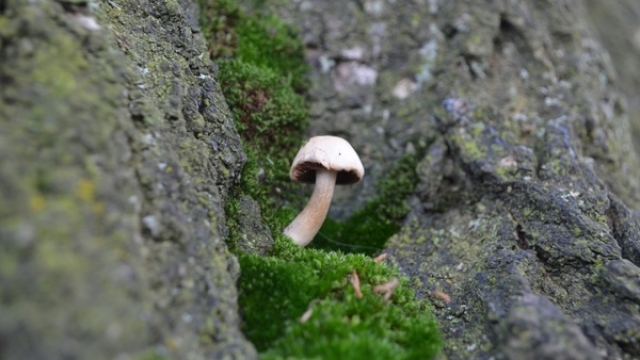
Have you ever wondered how those plump and delicious mushrooms make their way onto our plates? Mushroom growing, an intriguing process that is both an art and a science, reveals the secrets behind cultivating these earthy delights. From spores to harvest, the world of mushroom cultivation offers a fascinating journey that combines skill, patience, and a deep understanding of nature.
At its core, mushroom growing entails meticulous steps that allow these fungi to flourish in controlled environments. It all begins with spores, microscopic particles that serve as the starting point of mushroom cultivation. These spores, like tiny seeds, hold the potential for a vast range of mushroom varieties, each possessing its unique flavor and texture. As the cultivation process unfolds, growers carefully nurture these spores, coaxing them to transform into mycelium, the vegetative stage of mushroom growth.
With mycelium established, the next step is to introduce it to a substrate—a nutrient-rich material such as straw, wood chips, or sawdust. Here, the mycelium’s delicate threads infiltrate the substrate, gradually colonizing and breaking it down. This crucial phase requires precise conditions regarding humidity, temperature, and air circulation to ensure the mycelium’s successful growth.
As the mycelium expands its network within the substrate, a captivating transformation takes place. Under the right conditions, tiny mushroom pins begin to emerge, signaling the imminent arrival of the fruiting bodies we know and love. With diligent care and a watchful eye, these young mushrooms are nurtured until they reach their optimal size and maturity.
The journey from spores to harvest in mushroom growing offers a captivating insight into the cultivation process. It is a journey that demands patience, meticulousness, and a profound appreciation for nature’s wonders. Join us as we embark on a revealing exploration of mushroom cultivation—a craft that allows us to savor the earth’s bountiful gifts right in our own homes.
Choosing the Right Mushroom Varieties
When it comes to mushroom growing, selecting the appropriate varieties is crucial for a successful harvest. The right choice will depend on several factors, including your available resources, desired cultivation method, and personal preferences.
Firstly, consider the climate and environment in which you plan to grow mushrooms. Some varieties thrive in specific conditions, such as the cool temperatures of a cellar or the high humidity of a greenhouse. Understanding the requirements of different mushroom species will help you make an informed decision.
Next, think about the purpose of your mushroom cultivation. Are you growing them for culinary delights or medicinal purposes? Certain varieties, like the popular White Button mushroom or the versatile Shiitake, are perfect for adding flavors to various dishes, while others, such as the Lion’s Mane or Reishi mushrooms, are known for their potential health benefits.
Lastly, consider your level of experience and the availability of mushroom spawn or inoculation materials in your area. Some varieties are more suitable for beginners and are readily accessible, while others may require specific techniques or harder-to-find materials.
By carefully selecting the right mushroom varieties based on your specific circumstances, you can set yourself up for a successful and rewarding mushroom growing experience. Stay tuned for the next section, where we’ll delve into the vital aspect of preparing the growing medium.
Mushrooms Golden Teacher
Creating the Ideal Growing Environment
To successfully cultivate mushrooms, creating the perfect growing environment is crucial. The environmental conditions play a key role in the growth and development of these fungi. Here are three important factors to consider when establishing the ideal growing environment for mushrooms:
Temperature: Maintaining the right temperature is vital for mushroom cultivation. Different types of mushrooms have specific temperature requirements. Generally, a temperature range of 55-65°F (12-18°C) is suitable for most varieties. This range encourages healthy mycelium growth and prevents the formation of molds or other contaminants. A stable temperature is essential throughout the entire cultivation process.
Humidity: Mushrooms thrive in high humidity environments. The relative humidity level should be kept around 85-95% to ensure optimal growth. This can be achieved by misting the growing area regularly or using a humidifier. Adequate moisture in the air is essential for the formation and development of the fruiting bodies.
Light: Unlike plants, mushrooms do not require direct exposure to light for photosynthesis. In fact, excessive light can be detrimental to their growth. Mushrooms benefit from indirect, diffused light or low-level ambient light. Complete darkness is also acceptable during the initial stages of cultivation. Light plays a role in triggering the fruiting process, and the timing and duration of light exposure can influence the mushroom’s development.
By carefully controlling the temperature, humidity, and light conditions, you can create an ideal growing environment for your mushrooms. These factors, along with other essential considerations such as proper air circulation and ventilation, will significantly impact the success of your mushroom cultivation venture.
Harvesting and Maintaining Mushroom Farms
In order to have a successful mushroom growing operation, it is crucial to understand the proper techniques for harvesting and maintaining mushroom farms. This ensures a consistent and bountiful harvest of these delicious fungi.
Firstly, timing is key when it comes to harvesting mushrooms. Different varieties have specific growth cycles, so it is important to closely monitor their development. Most mushrooms are ready to be harvested when their caps have fully opened but have not yet flattened completely. For the best flavor and texture, it is recommended to harvest the mushrooms before the spores start to drop.
When harvesting mushrooms, it is essential to handle them with care. Mushrooms are delicate and can easily bruise, which affects their quality and shelf life. Gently twist or cut the stems at the base of the mushroom to remove them from the substrate. It is advisable to use a clean, sharp knife or scissors to prevent any damage to the mushrooms.
Maintaining the mushroom farms is equally important to ensure a continuous harvest. Proper sanitation practices are essential to prevent the growth of unwanted fungi or bacteria, which can compete with the desired mushrooms. Regularly clean and disinfect growing containers, tools, and the surrounding area to maintain a sterile environment.
Additionally, monitoring the temperature and humidity levels within the mushroom growing area is crucial. Different mushroom varieties have specific temperature and humidity requirements, so it is important to adjust these parameters accordingly. Proper ventilation is also necessary to prevent the buildup of excess carbon dioxide and to promote healthy mushroom growth.
In conclusion, with the right knowledge and techniques, harvesting and maintaining mushroom farms can be a rewarding endeavor. By understanding the optimal harvest time, handling mushrooms with care, and maintaining a clean and controlled environment, growers can enjoy a thriving mushroom business.



